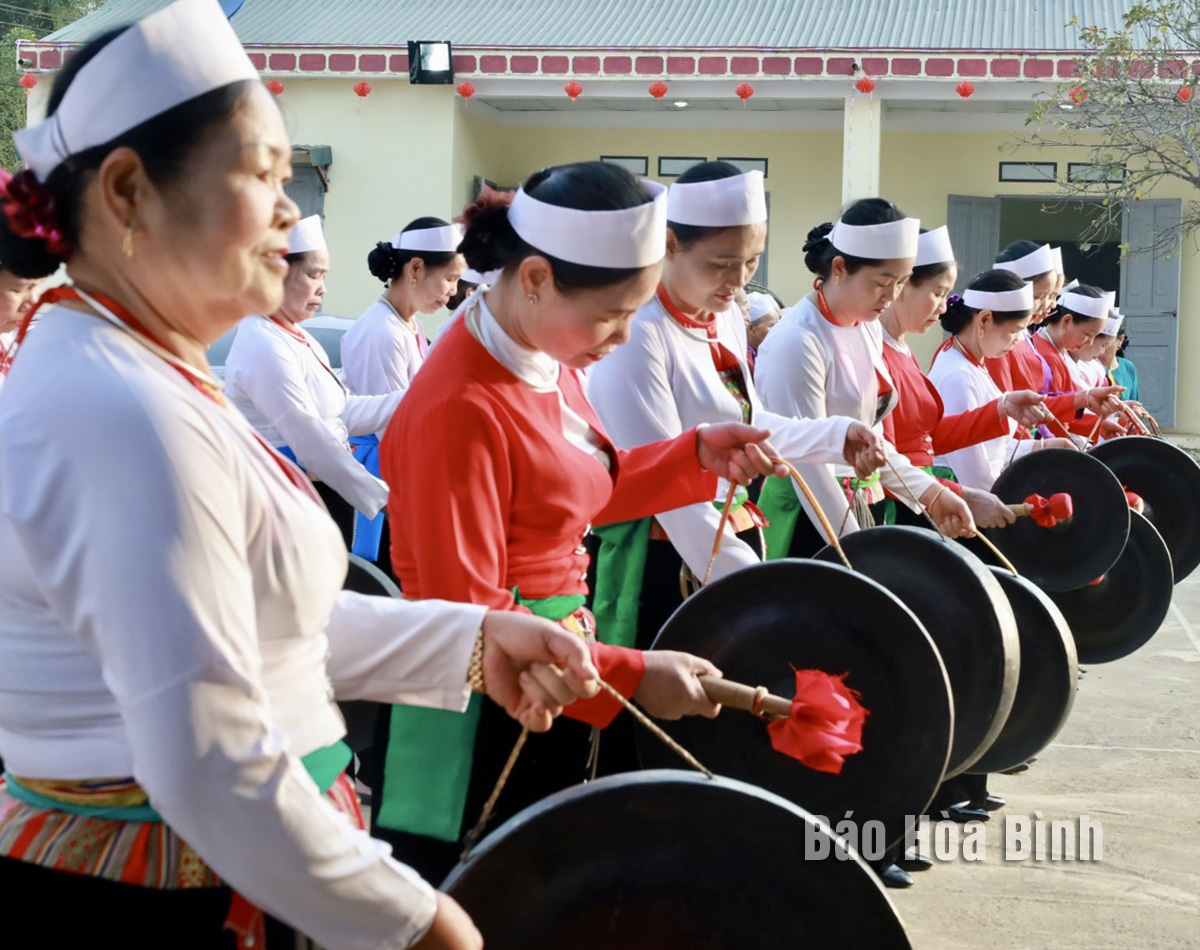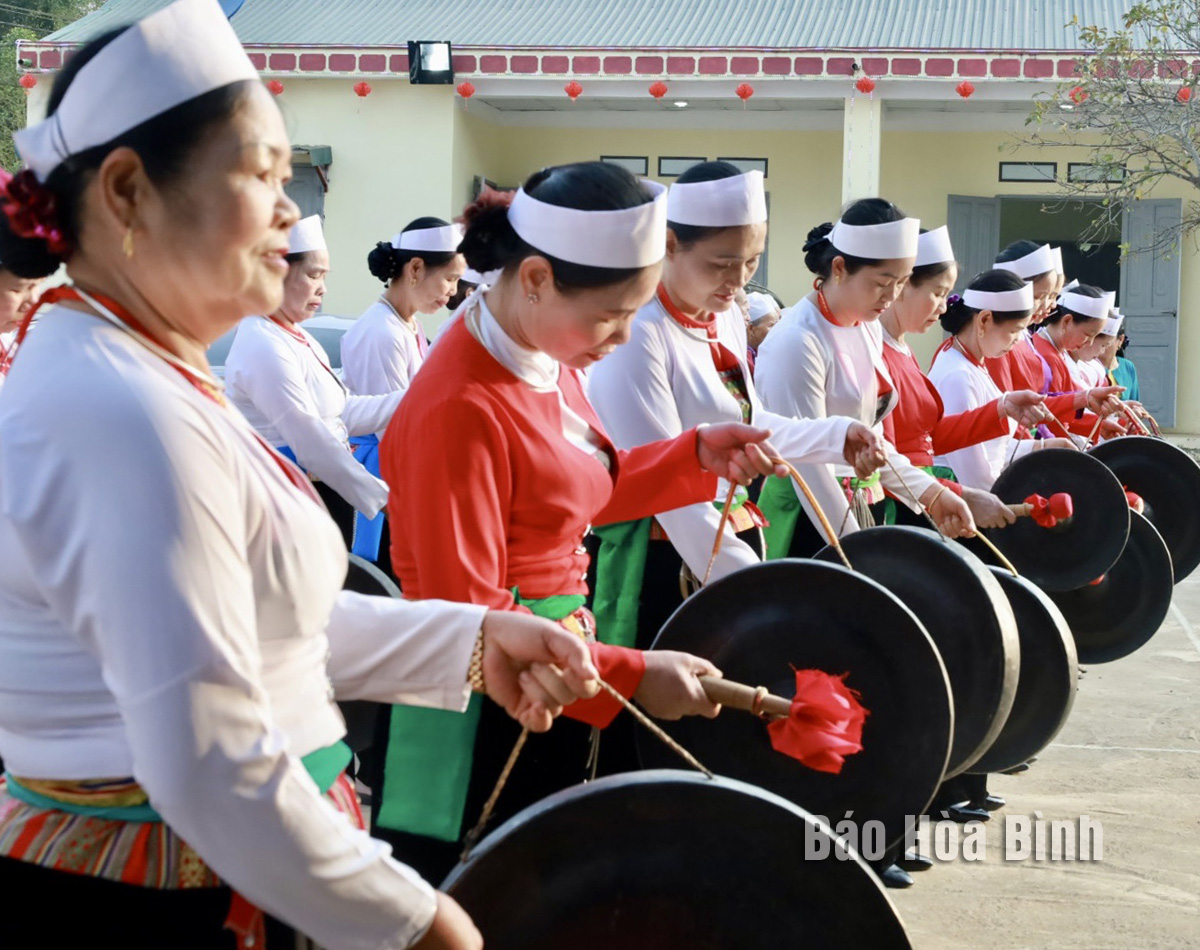
The movement "All people unite to build cultural life" has become a cornerstone of community development in Lac Son district, aligning with national rural development goals and local patriotic initiatives.
A shining example of this effort is Hau Nghi street in Vu Ban town, where 338 households from four ethnic groups work together to enhance both their living conditions and social environment. The residents have embraced initiatives that foster economic growth, environmental sustainability, and lawfulness.
In 2023, the street's average per capita income exceeded 58 million VND (2,400 USD), reflecting the tangible benefits of their collective efforts.
Thuong Coc commune, where 98% of its population are Muong ethnics, has also strongly adopted the movement. Local authorities have promoted cultural preservation by forming 14 art performance teams and various clubs aimed at sustaining traditional practices.
A standout project in Cao hamlet saw the installation of streetlights and the creation of 600 meters of flower-lined roads, transforming the hamlet’s appearance while fostering community spirit.
Nguyen The Hung, head of Lac Son's culture department, emphasised that the movement has been instrumental in preserving the local cultural heritage, including Muong gongs, folk traditions, and other intangible asset.
By promoting cultural unity across different ethnic groups, the initiative has bolstered both social cohesion and economic development.
In 2023, 88.5% of residential areas and 86.6% of households in Lac Son were recognized as cultural communities, underscoring the movement's broad impact on the district’s progress and stability.
With an increasingly vibrant and widespread emulation movement aimed at building cultured residential areas and cultured families, Yen Thuy District has been making steady progress toward improving both the material and spiritual well-being of its people, while fostering a civilized, prosperous, beautiful, and progressive community.
Once lacking recreational spaces and community facilities, Residential Group 2 in Quynh Lam Ward (Hoa Binh City) has recently received attention for the construction of a new, spacious, and fully equipped cultural house. The project followed the model of state support combined with public contributions in both labor and funding.
The "All people unite to build cultural life" movement, which has been effectively integrated with Kim Boi district’s socio-economic development goals, is fostering a lively spirit of emulation across local residential areas, hamlets, villages, public agencies, and enterprises. In addition, through the initiative, traditional cultural values are being preserved and promoted, while community solidarity and mutual support in poverty reduction and economic development are being strengthened.
A working delegation of the Hoa Binh provincial People’s Committee led by its Permanent Vice Chairman Nguyen Van Toan on June 11 inspected the progress of a project to build the Mo Muong Cultural Heritage Conservation Space linked to tourism services in Hop Phong commune, Cao Phong district.
Born and growing in the heroic land of Muong Dong, Dinh Thi Kieu Dung, a resident in Bo town of Kim Boi district, in her childhood was nurtured by the sweet lullabies of her grandmother and mother. These melodies deeply imprinted on her soul, becoming an inseparable part of her love for her ethnic group's culture. For over 20 years, this love for her hometown has driven Dung to research, collect, and pass down the cultural values of the Muong people to future generations.
In the final days of May, the Ethnic Art Troupe of Hoa Binh Province organized performances to serve the people in remote, mountainous, and particularly disadvantaged areas within the province. These were not just ordinary artistic shows, but they were the meaningful journeys aimed at spreading cultural values, enhancing the spiritual life of the people and contributing to the preservation of ethnic minority cultural identities.



